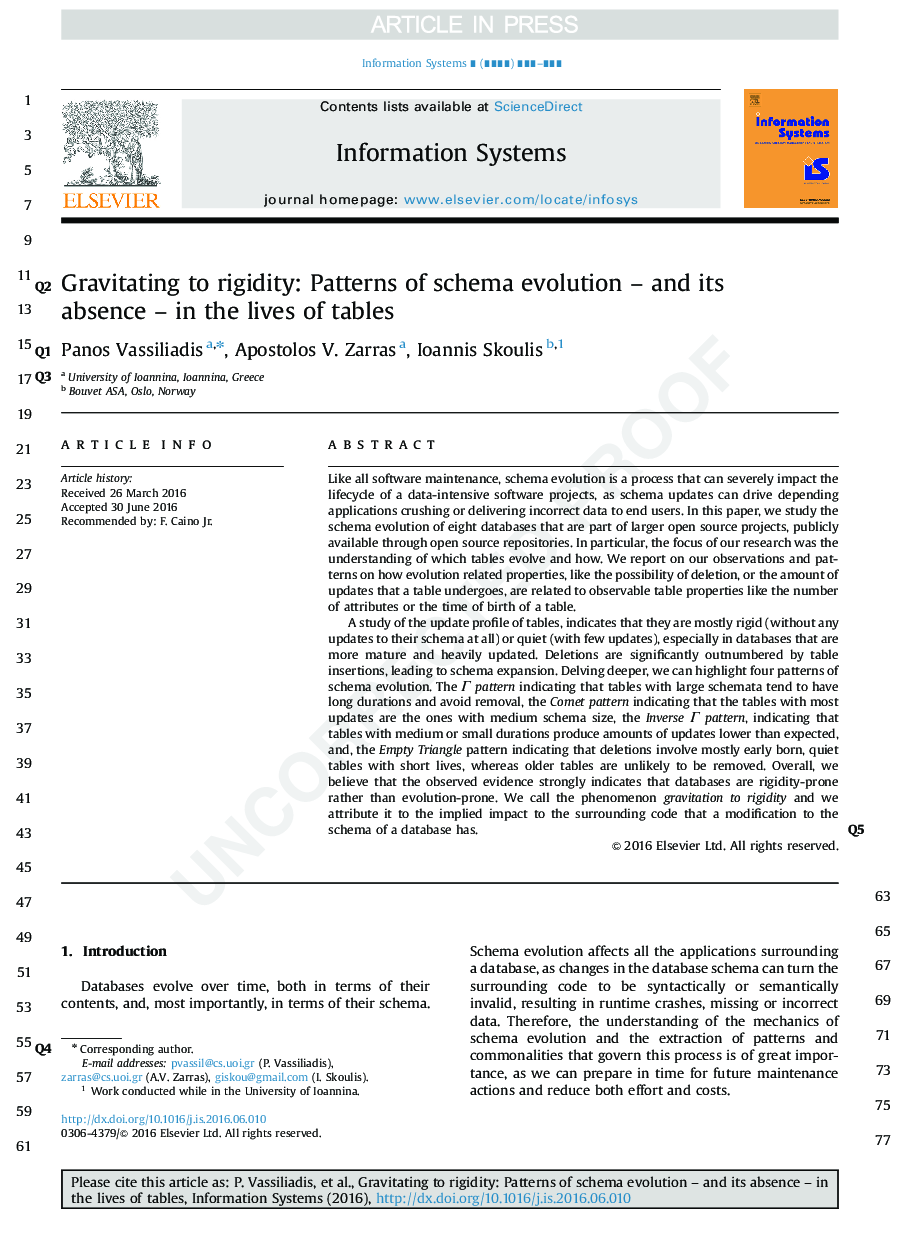| Article ID | Journal | Published Year | Pages | File Type |
|---|---|---|---|---|
| 4945074 | Information Systems | 2017 | 23 Pages |
Abstract
A study of the update profile of tables, indicates that they are mostly rigid (without any updates to their schema at all) or quiet (with few updates), especially in databases that are more mature and heavily updated. Deletions are significantly outnumbered by table insertions, leading to schema expansion. Delving deeper, we can highlight four patterns of schema evolution. The Î pattern indicating that tables with large schemata tend to have long durations and avoid removal, the Comet pattern indicating that the tables with most updates are the ones with medium schema size, the Inverse Î pattern, indicating that tables with medium or small durations produce amounts of updates lower than expected, and, the Empty Triangle pattern indicating that deletions involve mostly early born, quiet tables with short lives, whereas older tables are unlikely to be removed. Overall, we believe that the observed evidence strongly indicates that databases are rigidity-prone rather than evolution-prone. We call the phenomenon gravitation to rigidity and we attribute it to the implied impact to the surrounding code that a modification to the schema of a database has.
Related Topics
Physical Sciences and Engineering
Computer Science
Artificial Intelligence
Authors
Panos Vassiliadis, Apostolos V. Zarras, Ioannis Skoulis,
